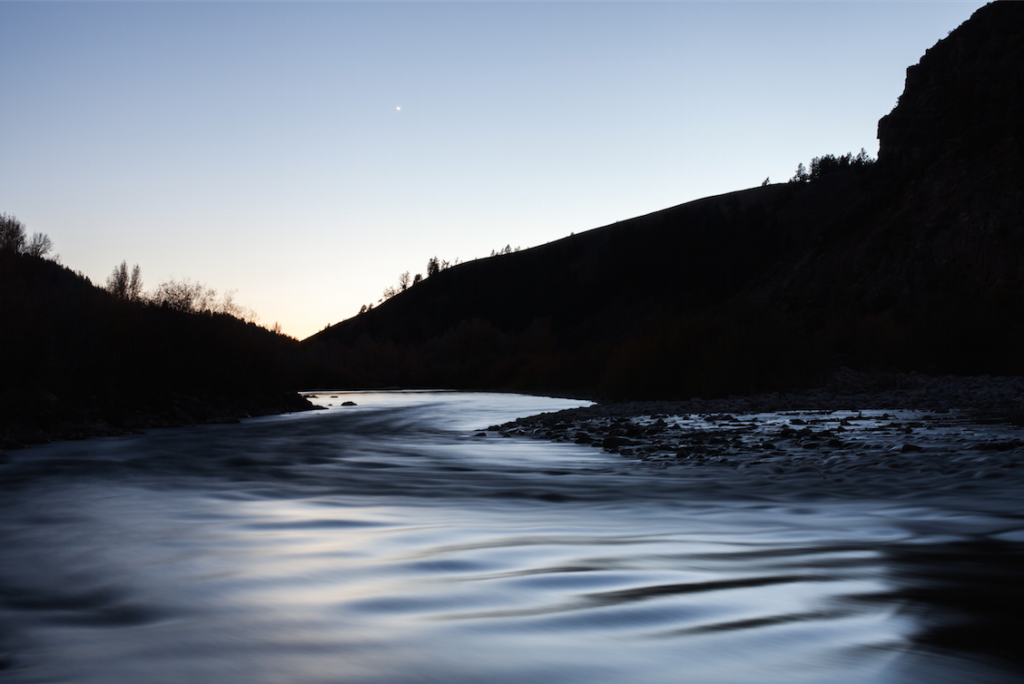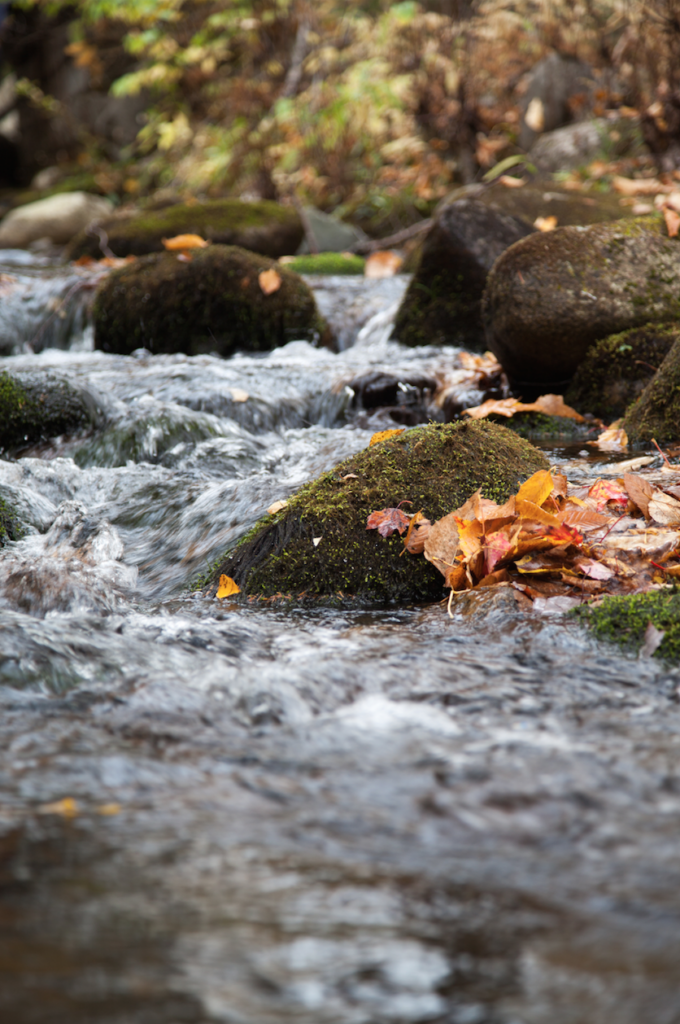Every conservation project starts with stories. Conservation efforts are ignited by stories of experiences, wildlife encounters, and day-to-day accounts of what it is like to live or exist in a particular place. At the heart of these stories are meaningful connections between people and places. Sharing these stories invites people to develop their own connection to a place.
Richard Matthews’ essay River Watchers provides a window into life on the edge of the Sandy River, a 73-mile tributary of the Kennebec River. Its headwaters are nestled in the heart of the Mountains of the Dawn, a vast, forested wildlife corridor in western Maine that has many values and uses. With help from partners and local communities, NEFF is working to ensure that the Mountains of the Dawn will continue to provide the wide array of values that make the region such a special place to so many people. We hope you enjoy Matthews’ essay and connection to a place that he and his wife call home.

River Watchers
by Richard Matthews
Here in Phillips, the Sandy River runs through the center of town, and since September when we moved into a house just above its banks, Pam and I have become river watchers. Almost the first thing we do each morning is look out our windows to check the state of the rapids that boil along in back of our house. Over time, the river has become part of our morning routine: we build up the fire in the woodstove, pour ourselves coffee, and sit by the big windows in what we call our river room to watch the Sandy tumble by. When finally we turn to the day’s tasks, we check the river less faithfully, but we seldom pass by a window without giving it a glance, and if it changes, we’re the first in the neighborhood to know.
 As Maine rivers go, ours bears a rather bland name. In a state with waterways given monikers such as Kennebeck, Sebasticook, Mattawamkeag, and Androscoggin, the Sandy was undistinguished in its christening. But what it lacks in exotic syllables, it makes up for in character and mood.
As Maine rivers go, ours bears a rather bland name. In a state with waterways given monikers such as Kennebeck, Sebasticook, Mattawamkeag, and Androscoggin, the Sandy was undistinguished in its christening. But what it lacks in exotic syllables, it makes up for in character and mood.
When during heavy rains its waters rise, the Sandy rushes along with force enough to click stones together and it’s always fun to visit its banks after levels drop a bit and discover newly built bars of pebbles or sand. A tree trunk blocking a channel between dump truck-size boulders (kayakers call these obstacles “strainers”) will stick around a day or two, then—with the next rise of water—disappear to snag up again on another rocky reach downstream.
Normally a well-behaved river, the Sandy can get its back up pretty quickly and we’ve seen it try to invade our back yard. We’re high enough above the river that it doesn’t threaten the house, though from the noise the stream makes at night it’s easy to imagine it coming through the windows. It changes color, too, reflecting the hue of the sky: a cloudy day gives the river a sinister tinge, while a blue sky lends it gaiety, its rapids becoming a tumbling white froth. Mornings are often best, though: then, in the early light with the mist rising from its gray surface, the silvered river seems like some dim memory of another time, an ancient course of water streaming through another age, another life.
Now I don’t want to make too much of this. While there is something elemental about a river and ours does have a certain lively animus, it is, after all, just a river. It’s not too much to say, however, that the Sandy’s moods play a part in shaping ours. At Pittsfield in Massachusetts where Melville lived for a time, the view outside his study window at Arrowhead of looming Mount Graylock is said (if only by the docents conducting the tours) to resemble a profile of his famous white whale. Rearing up on our river bank below the house is a huge boulder shaped vaguely like a leviathan that I’ve dubbed Moby Rock. This is no mere literary conceit. Something there is about the river that makes me want to connect it with a fundamental force, a force similar to what I feel when Melville tells me of brooding oceans and Ahab’s smoldering fury.
But there I go again. My principle relationship with Moby Rock is much more mundane than mystical. I go down to the water and sit upon it, checking out the rapids and rocks and listening to the Sandy’s restless music. Being a high perch, the top of Moby Rock allows me to study the benchmarks my mind has picked out to tell me the mood of the river—or at least its level—and I can set a watch for the mink I’ve seen along the water’s edge, so far glimpsed only from the windows of the river room. Or I wander downstream along the Sandy’s banks looking for flotsam, checking out the quieter pools, or testing the briskness of the water with my bare feet—an experiment entirely suspended when the nighttime temperatures began dropping.
As I’m apt to do with objects in nature, both animate and inanimate, I’ve begun forming a personal relationship with the river. To date, Pam and I have only lived on the Sandy’s banks for three months, so we’re barely past the early stages of awkward acquaintance, yet I feel we and the stream are already edging toward friendship. And though I don’t know for sure what the river makes of my daily proximity to its busy purposes and noisy progress, I’ve enjoyed the companionability it’s so far extended.
Richard Matthews writes from his home on the Sandy River in Phillips, Maine. A freelance journalist, he is the author of Notes from an Innkeeper’s Journal, and co-author of Hell is So Green.
